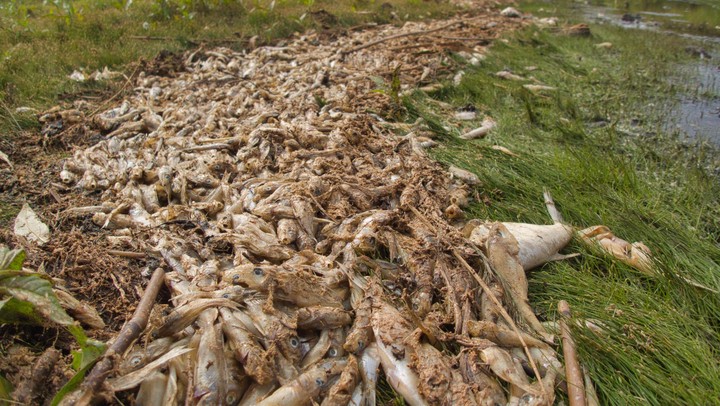Fish death in Lake Filsø
 Dead fish in Lake Filsø, photo by Emil Kristensen
Dead fish in Lake Filsø, photo by Emil Kristensen
Death of 80 tonnes fish
During the summer 2018 all fish in the southern part of Filsø died suddenly (DR news). The event occurred after a long period of drought followed by a sudden rain event. This caused a high inflow of water, and along with it, a large pulse of organic matter which rapidly increased respiration rates within the lake and caused anoxia within few days.
We have described the mechanisms and circumstances surrounding these events in a paper published in Science of the Total Environment. Code used for the analysis and figures are available from my Github repository.
Identifying the sources and management actions
In this project we investigate the causes of the fish kill. We examine the ability of many natural tracers to identify sources of easily degradable organic matter and water with high oxygen consumption. We have established multiple stations in the catchment where we measure water flow and collect water samples several times a year. This way we can track and trace inputs of water solutes to the lake.
Fingerprinting water
We measure a large suite of natural tracers. For example, we measure dissolved organic matter fluorescence By exposing the water sample to light and measuring the response at many wavelengths we obtain an Excitation-Emission-Matrix (EEM). This shape of the resulting 3D surface depends on the different organic fluorescent compounds and their concentration in the water sample. By stacking many EEM’s, the fluorescent compounds and their concentration can be determined using Parallel-Factor-Analysis (PARAFAC).
Explore an EMM measured as part of this project below:
Using EEM’s and other water chemistry variable, we have identified catchments delivering water with high oxygen consumption to Filsø. We found that some of the PARAFAC components were correlated to high oxygen consumption. These results, and our investigations in the Filsø catchment area, have been described in a paper (open access) published in Ecological Engineering.
The projects are funded by Aage V. Jensen Naturfond.